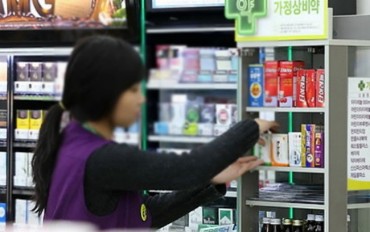
Giant panda Fu Bao enjoys eating bamboo at Everland, in this undated file photo provided by the theme park. (Image courtesy of Yonhap)
BEIJING, May 27 (Korea Bizwire) – The return of a beloved giant panda from South Korea to China last month has sparked an outcry over concerns about the animal’s living conditions, prompting Chinese authorities to directly address allegations of mistreatment.
On the Chinese social media platform Weibo, posts have surfaced expressing worry about the well-being of the panda, Fu Bao, who is currently housed at the Chengdu Panda Breeding Center in Sichuan Province while undergoing quarantine to readjust to the local environment.
Some Chinese netizens have raised suspicions that Fu Bao may have been improperly exposed to “outsiders” who are not part of the center’s professional staff during this transition period. Speculation ranges from such unauthorized individuals potentially touching or feeding Fu Bao to claims that recent photos suggest someone may have gained inappropriate access to the panda’s non-exhibition enclosure.
Alarmingly, there were even unverified allegations circulating about threats to poison Fu Bao’s food. Concerns were also voiced about the suitability of the breeding facility where Fu Bao is being housed and a lack of clarity on why the panda must remain in that area.
These Weibo posts caught the attention of South Korean internet users as well, amplifying scrutiny over Fu Bao’s situation after the high-profile panda’s repatriation following almost four years residing at a South Korean zoo.
In response, Chinese authorities have firmly pushed back against such rumors. The China Conservation and Research Center for the Giant Panda stated on May 25 that online claims about Fu Bao’s poor living environment, unauthorized individuals entering the enclosure to touch or feed the panda, and taking photos, were “hearsay and rumors.”
“After verification, no situation was found where a non-staff member entered the breeding area to have contact with Fu Bao, feed it, or take photos,” the center said. It added that Fu Bao currently resides in the breeding area of the Wolong Panda Base, which features connecting enclosures to facilitate the panda’s smooth integration into the local population.
The facility’s design, with observation spaces for caretakers to monitor and build trust with Fu Bao, is meant to minimize stress during this transition period, according to the center. It stated plans to gradually move Fu Bao to an exhibition area for public viewing once the panda has better adjusted.
However, some remain unconvinced by the official account. The center had previously reported an outside individual’s unauthorized photos of Fu Bao to the police – suggesting an apparent contradiction regarding the earlier denials of any intrusion.
“The center has only begun to act and offer explanations after public opinion on the matter has already become quite serious each time it faces specific allegations,” wrote one Weibo user appearing to be Chinese. “This phenomenon directly and severely undermines the center’s credibility.”
Lina Jang (linajang@koreabizwire.com)






